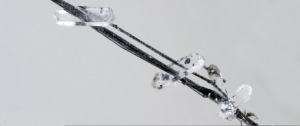 Microanalytical and metrology instrumentation supplier CAMECA held an international competition soliciting images to consider for its 2018 calendar. CAMECA selected a composite image of the new mineral merelaniite by John Jaszczak (Physics) and colleague John Spratt (Natural History Museum, London) as one of the winners, and appears as the highlight for the January 2019 calendar pages.
Microanalytical and metrology instrumentation supplier CAMECA held an international competition soliciting images to consider for its 2018 calendar. CAMECA selected a composite image of the new mineral merelaniite by John Jaszczak (Physics) and colleague John Spratt (Natural History Museum, London) as one of the winners, and appears as the highlight for the January 2019 calendar pages.
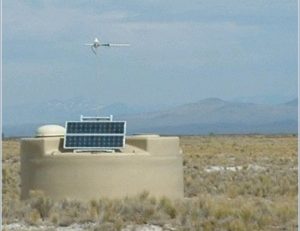
The Pierre Auger Observatory, of which David Nitz and Brian Fick are both a part, received international recognition as one of the Top Ten Physics World 2017 Breakthroughs of the Year.
In an article published in Science, the Pierre Auger Collaboration has definitively answered the question of whether cosmic particles from outside the Milky Way Galaxy.
The article, titled “Observation of a large-scale anisotropy in the arrival directions of cosmic rays above 8 × 1018 eV”, notes that studying the distribution of the cosmic ray arrival directions is the first step in determining where extragalactic particles originate. You can read more in the Institute of Physics announcement and the Michigan Tech news story.
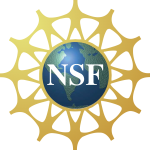 The survey results, just released, are based on research expenditures by NSF-designated disciplines, some of which include academic departments, centers and institutes at Michigan Tech. NSF also uses different names for some of its disciplines.
The survey results, just released, are based on research expenditures by NSF-designated disciplines, some of which include academic departments, centers and institutes at Michigan Tech. NSF also uses different names for some of its disciplines.
Mechanical Engineering rose to No. 18 in the nation in research expenditures. Metallurgical and Materials Engineering rose to No. 41 and Atmospheric Sciences came in at No. 46. Electrical Engineering was ranked No. 56 in research expenditures nationally.
Michigan Tech’s research expenditures in Atmospheric Sciences and in Ocean Science, ranked No. 55 in the nation, the highest of any university in Michigan.
Read the full story on the Michigan Tech News website.
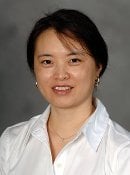 Dongyan Zhang (Physics) has received funding from StabiLux Biosciences, Inc. in the amount of $198,944. This is for a two-year project entitled “High Brightness Fluorophores II”.
Dongyan Zhang (Physics) has received funding from StabiLux Biosciences, Inc. in the amount of $198,944. This is for a two-year project entitled “High Brightness Fluorophores II”.
Dr. Zhang is the co-PI of this Small Business Technology Transfer (STTR) Phase II project funded by National Science Foundation.
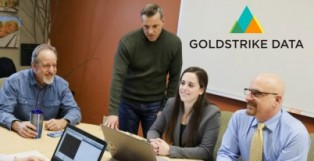 Three startup companies with Michigan Tech roots have been named semi-finalists in this year’s Accelerate Michigan Innovation Competition.
Three startup companies with Michigan Tech roots have been named semi-finalists in this year’s Accelerate Michigan Innovation Competition.
Goldstrike Data, a big data analytics firm founded and headed by Michigan Tech alumna Ashley Kern ’15, was selected as one of 36 semi-finalists, as were StabiLux Biosciences (Novolux Biosciences) and Orbion Space Technology. StabiLux Biosciences( Novolux Biosciences) was founded by Yoke Khin Yap, a professor of physics at Tech, and Orbion Space Technology was founded by L. Brad King, the Ron and Elaine Starr Professor in Space Systems in the Department of Mechanical Engineering-Engineering Mechanics.
The semi-finalists are innovative startups from a variety of high-growth sectors including advanced materials, manufacturing, alternative energy, business services, consumer products, information technology, life sciences/healthcare, media, mobility and more. On Nov. 16, 10 finalists will be selected and the winner will be chosen from among the finalists that night at the Detroit Masonic Temple. Since the competition’s inception, participating companies have generated more than 1,000 jobs in Michigan and raised more than $550 million in capital.
“We are extremely impressed with the diverse and creative entries that came to us from across the state and we’re excited to unveil an outstanding new crop of competitors,” said Martin Dober, vice president of Invest Detroit and managing director of Invest Detroit Ventures. “This competition has the potential to be life changing for these businesses. It is truly rewarding to help put promising young startups on a trajectory toward success.”
Each year, the Accelerate Michigan Innovation Competition showcases the startup innovation throughout Michigan and provides startups with the exposure, funding and mentorship they need. The first place company will win $500,000. The total value of all prizes is almost $1 million.
Including that the Mineral was named after our own Prof. John A. Jaszczak for all his contributions to understanding natural graphite!
follow this link and see one of the newest internationally recognized minerals.
Here some of our own researchers working in the Pierre Auger Collaboration help detect cosmic rays.
Please take some time to read it, it is very interesting and has some great photos and explains how to detect cosmic rays.
read it here

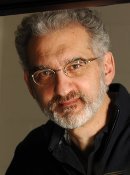 Miguel Levy (Physics/MSE/CQP) is the principal investigator on a project that has received a $82,445 research and development contract from the Air Force: Office of Scientific Research.
Miguel Levy (Physics/MSE/CQP) is the principal investigator on a project that has received a $82,445 research and development contract from the Air Force: Office of Scientific Research.
The project is titled “Materials Processing for Heterogeneous Integration of Optical Isolators: Phase 2.”
This is a two-year project.
 Kamal Kant Chandrakar has received a prestigious NASA Earth and Space Science Fellowship. Kamal is working for his PhD degree with Prof. R. Shaw in the area of atmospheric physics.
Kamal Kant Chandrakar has received a prestigious NASA Earth and Space Science Fellowship. Kamal is working for his PhD degree with Prof. R. Shaw in the area of atmospheric physics.
Congratulations Kamal!
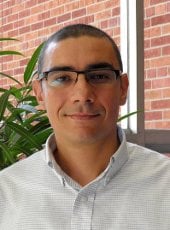 Professor Ramy El-Ganainy has recently been published on the nature international weekly journal, titled ‘Enhanced sensitivity at higher-order exceptional points’.
Professor Ramy El-Ganainy has recently been published on the nature international weekly journal, titled ‘Enhanced sensitivity at higher-order exceptional points’.
Congratulations Professor El-Ganainy!